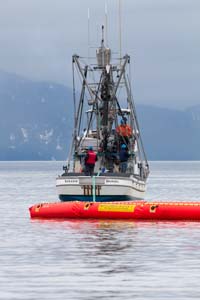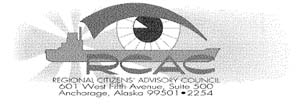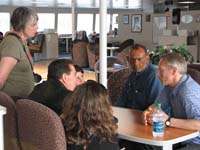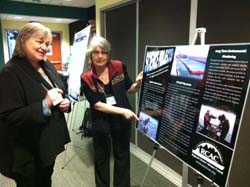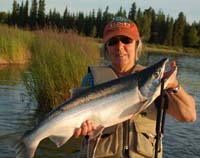By LISA MATLOCK
Outreach Coordinator
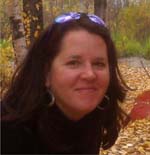
Each year the council exhibits its booth and presents its citizen-driven research and information on technological advances at conferences, both in Alaska and outside, making contact with thousands of individuals from all over the world. Have you ever wondered why the council asks its staff and volunteers to participate in these conferences?
The value of the council contributing at conferences lies in our need to constantly expand our knowledge about cutting edge oil spill prevention and response strategies from all over the world. It is also vital for the council to share its story of citizens’ oversight of Prince William Sound’s oil industry. Each of the regular conferences the council attends is unique in its audience and focus.
For instance, the Arctic and Marine Oilspill Program was initiated by Environment Canada in 1978 to “improve the knowledge base and technology for combatting Arctic and marine oil spills.” Its technical seminar has expanded and now includes a wider range of oil spill-related sessions. However, according to the council’s project manager for environmental monitoring, Joe Banta, “its technical content and cold waters focus” make it an important conference for the council to attend since it addresses the environment in which we do all of our work. My predecessor Linda Robinson attended this conference in Nova Scotia in June.
Then there is the International Oil Spill Conference, which has more of a focus on the international oil spill response community and its technology and techniques for response. Many participants are from the U.S. Coast Guard, private sector companies, and non-governmental organizations who “come together to tackle the greatest challenges facing us with sound science, practical innovation, social engineering and imagination,” according to the conference’s website. The council absorbs important lessons in logistical planning for oil spill response and technical advances at this conference. This conference will be held in Savannah, Georgia next spring, and council staff will be in attendance.
More locally, the Pacific Marine Expo in Seattle and Kodiak ComFish expositions help the council to gain insight into the needs of some of its most interested citizens, the maritime community in Alaska and the Pacific Northwest. At both of these conferences the council exhibits its booth and presents the fishing and boating public with an opportunity to voice their interest in safe oil shipping in the Exxon Valdez region.
If you find the council booth at any of these events, or at others, in the coming months and years, please stop by and give us your input. We can only choose the best paths forward in helping to prevent future oil spills in our region with your help and interest.
Upcoming outreach events
We share our oil spill research and educational resources with the public at a variety of conferences. In the next few months, we’ll be at the following conferences and events:
Where can you connect with K-12 teachers from all over the state to share the best new ideas in math and science education? The bi-annual Alaska Math and Science Conference is that place, and it will be held at East High School in Anchorage on October 18-20. For more information, visit: 2013 Alaska Math and Science Conference.
The City and Port of Valdez will host the 34th annual Alaska Association of Harbormasters and Port Administrators conference October 21-24. Harbormasters from all over the state will gather to discuss how to keep Alaska’s harbors safe and productive for our coastal communities. Find out more: Alaska Association of Harbormasters and Port Administrators.
The council will again be exhibiting at the Pacific Marine Expo in Seattle November 20-22. The Expo brings together maritime industries and communities from all over Alaska and the Pacific Northwest under one roof each year. More information: Pacific Marine Expo.
Every winter, the Alaska Marine Science Symposium proves that it is one of the best places to learn about cutting edge Alaska fisheries and ecosystem research and technological advances in the state. This year, the symposium will be held January 20-24 in Anchorage. Find out more: Alaska Marine Science Symposium.
